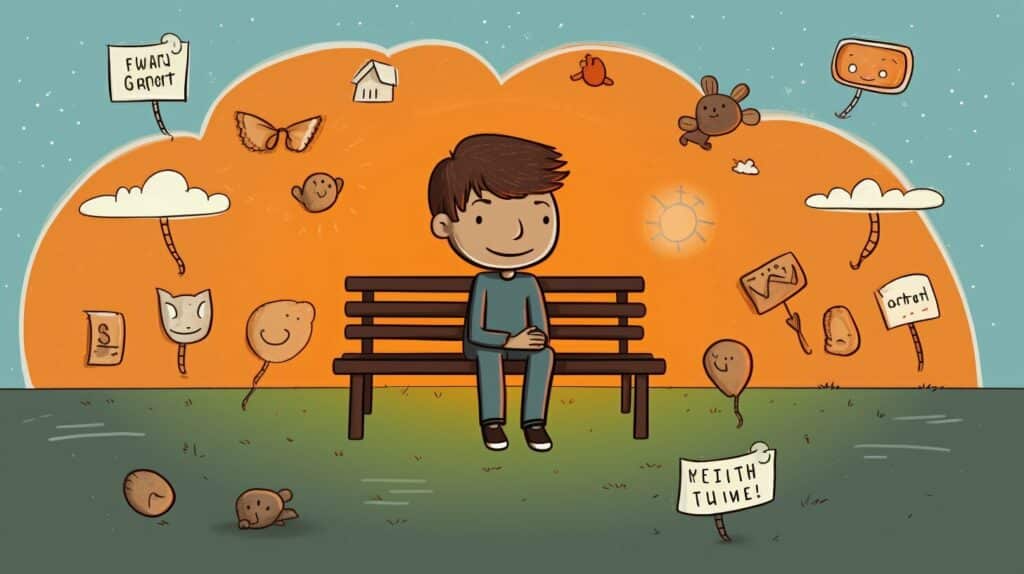If you’ve ever tried to explain pressure to a child, you know that it can be challenging to make them understand. Pressure is a complex concept that can be difficult for children to grasp. However, it’s important to help children understand pressure so they can identify and manage it in their daily lives.
In this article, we will explore fun and easy techniques for explaining pressure to children. We will also discuss why it’s important to talk to kids about pressure, provide a child-friendly explanation of pressure, identify pressure in everyday life, and offer coping strategies for dealing with pressure.
By the end of this article, you will have a better understanding of how to help your child navigate the pressures of life.
Key Takeaways
- Explaining pressure to a child can be challenging, but it’s important to help them understand
- This article will explore fun and easy techniques for teaching kids about pressure
- We will discuss the importance of talking to kids about pressure and identifying pressure in everyday life
- We will provide coping strategies for dealing with pressure and setting realistic expectations
- Encouraging a healthy perspective on failure is also a key component of helping children manage pressure
Why It’s Important to Talk to Kids About Pressure
As a parent or caregiver, it’s important to discuss pressure with children and teach them how to manage it. Pressure is a part of everyday life, and understanding how to cope with it can help children thrive both academically and socially. Without the necessary skills and support, children may experience negative effects on their mental health and well-being.
By talking to kids about pressure, you are giving them the tools they need to handle stress and challenges effectively. It can also help them develop resilience, which is an important life skill that will serve them well into adulthood.
It can be difficult to know where to start the conversation, but it’s important to introduce the topic in a way that is age-appropriate and easy to understand. Using child-friendly language, you can explain what pressure is and how it can affect them.
Why It’s Important to Talk to Kids About Pressure
When parents talk to their children about stress and anxiety in a supportive and understanding way, it can have a positive impact on the child’s overall well-being.
Research has shown that when parents talk to their children about stress and anxiety in a supportive and understanding way, it can have a positive impact on the child’s overall well-being. It can also help children feel more comfortable discussing their feelings and seeking help when they need it.
Teaching children about pressure can also help them recognize the signs of stress in themselves and others. This awareness can lead to early intervention and the development of positive coping strategies.
Overall, talking to your child about pressure is an essential part of their development and well-being. It can help them build important life skills and set them up for success in the future.

Understanding Pressure: Breaking It Down for Kids
Explaining pressure to a child can be challenging, but it is essential for their well-being. Pressure is a force that can be physical or mental, pushing us to perform or achieve something. It is like having a weight on your back or a deadline to meet, and it can cause stress.
To help your child understand pressure, it can be helpful to use analogies or examples they can relate to. For example, you can explain pressure is like when you are playing a game, and you have to reach a certain level, but there is a time limit. Or, it’s like trying to carry too many things at once, and you feel the weight and stress of it.
You can also use simple language to describe pressure, such as “pressure is when you feel like you have to do something, even if you don’t want to.” Encourage your child to ask questions to help them understand the concept better.
Remember: It’s important to validate your child’s feelings and let them know that it’s okay to feel pressure sometimes. Let them know that you are there to support them and help them manage their stress.
Use the following table to help explain pressure to your child:
| Term | Explanation |
|---|---|
| Pressure | It’s like a weight on your back or feeling like you have to achieve something. |
| Stress | It’s like feeling overwhelmed or anxious because of pressure. |
| Coping Strategies | Things you can do to help manage stress and pressure. |

Identifying Pressure in Everyday Life
Children experience pressure in many different areas of their lives, including school, sports, and social situations. It’s important for parents and caregivers to help children recognize and identify these sources of pressure so that they can learn how to manage them effectively.
School is one of the most common sources of pressure for children. They may feel pressure to perform well academically, meet deadlines, and fit in with their peers. If your child seems stressed about school, take the time to talk to them about what’s causing their anxiety. Encourage them to break down their tasks into smaller, more manageable steps so that they don’t feel overwhelmed. Help them to prioritize their responsibilities and set realistic expectations for themselves.
Sports can also be a source of pressure for children, especially if they feel they are not living up to expectations or if they are struggling to keep up with their teammates. If your child is feeling pressure from sports, try to focus on the fun and enjoyment of the activity rather than the outcome. Encourage them to practice and improve at their own pace, and remind them that mistakes are a natural part of the learning process.
Social situations can be a source of pressure for children who may feel like they have to fit in or conform to their peers’ expectations. Talk to your child about their social experiences and encourage them to be themselves and make friends who accept them for who they are. Teach them coping strategies like deep breathing exercises and positive self-talk to help manage the anxiety that comes with social pressure.
Remember, every child experiences pressure differently, and it’s important to be mindful of your child’s individual needs and experiences. By helping them recognize and manage pressure in their daily lives, you can empower them to develop healthy coping strategies that they can use throughout their lives.

Coping Strategies for Dealing with Pressure
It’s important to teach children how to cope with pressure in healthy and effective ways. Here are some techniques you can share with your child:
- Deep breathing exercises: Encourage your child to take deep breaths in through their nose and out through their mouth. This can help them feel calmer and more centered.
- Positive self-talk: Encourage your child to use positive statements when they’re feeling pressure. For example, “I can do this” or “I am strong.”
- Physical activity: Exercise can help release tension and stress. Encourage your child to participate in sports or engage in physical activity they enjoy.
- Taking breaks: Encourage your child to take breaks when they’re feeling overwhelmed. This can mean taking a short walk, reading a book, or engaging in a calming activity they enjoy.
- Seeking support: Encourage your child to talk to a trusted adult or peer about their feelings of pressure. This can help them feel supported and less alone.
Remember, it’s important to find coping strategies that work for your child’s individual needs and preferences. Encourage them to try different techniques and find what works best for them.

Setting Realistic Expectations
It’s important to remember that children are still developing and learning how to navigate the world around them. While it’s natural to want your child to succeed and do their best, it’s equally important to set realistic expectations for them. Putting too much pressure on a child can be overwhelming and lead to feelings of anxiety and stress.
One way to set realistic expectations is to have open and honest conversations with your child about their goals and what they hope to achieve. Encourage them to set achievable goals that they can work towards over time. It’s also important to remember that setbacks and failures are a natural part of the learning process and should be viewed as opportunities to learn and grow.

By setting realistic expectations, you can help your child feel less pressure and more confident in their abilities. Remember to be supportive and encourage your child every step of the way. With time, practice, and patience, your child can achieve great things without feeling overwhelmed by pressure.
Balancing Responsibility and Play
It is important to find a balance between work and play to alleviate pressure in children. Encouraging kids to engage in activities that promote relaxation and enjoyment can help reduce feelings of stress.
One way to achieve this balance is to create a schedule that includes both responsibilities and leisure time. This helps children understand that it is important to take care of responsibilities, but that they also need time to relax and have fun.
It is also essential to praise children for their efforts, not just their achievements. Recognizing their hard work and growth, no matter how small, can help them develop a healthy perspective on success and failure.

Finally, it is important to model a healthy work-life balance for children. Show them that you take time for yourself and engage in activities that you enjoy. This can encourage them to do the same and help them understand the importance of taking care of themselves.
The Role of Communication and Support
Open communication and support are crucial in helping children manage pressure. As a parent or caregiver, creating a safe and supportive environment for your child to express their feelings and seek help is essential.
Encourage your child to talk to you about their experiences and feelings, especially when they are feeling overwhelmed. Listen actively and without judgment to what they have to say. Let them know that it’s okay to make mistakes and that you are there to support them.
It’s important to also validate your child’s feelings and provide reassurance that they are not alone in dealing with pressure. Let them know that it’s normal to feel stressed or anxious at times and that there are ways to cope with these feelings.
Additionally, consider involving other trusted adults, such as teachers or coaches, in your child’s support system. They can offer guidance and provide additional support to help your child manage pressure.

“Encourage your child to talk to you about their experiences and feelings, especially when they are feeling overwhelmed.”
Encouraging a Healthy Perspective on Failure
One of the biggest contributors to pressure and stress in children is the fear of failure. It’s important to help children understand that making mistakes is a natural part of learning and that everyone fails at some point. By fostering a healthy perspective on failure, you can help your child build resilience and develop a growth mindset.
Encourage your child to view mistakes as opportunities for growth rather than as indicators of personal flaws. Help them understand that mistakes are normal and that everyone makes them, even adults. Share examples from your own life of times when you failed and overcame challenges.
Teach your child the importance of learning from mistakes. Encourage them to reflect on what went wrong and brainstorm ways they can do better next time. This will not only help them succeed in the future but also boost their confidence and self-esteem.
Remind your child that failure is not the end of the world. Encourage them to keep trying and not give up when things get tough. Celebrate their efforts and progress, not just their achievements.
By encouraging a healthy perspective on failure, you can help your child build resilience and develop the skills needed to handle pressure and stress in a healthy way.

Conclusion
Congratulations! You have now learned how to explain pressure to a child and equip them with the tools to manage it. Remember, talking to children about pressure and stress is crucial in ensuring their well-being.
By breaking down the concept of pressure into simpler terms and providing relatable examples, you can help children understand what pressure is and how it can affect them. Identifying pressure in everyday life and teaching coping strategies, such as deep breathing exercises and positive self-talk, can help children better manage stress.
It is also important to set realistic expectations for children and find a balance between responsibility and play. Encouraging open communication and support and promoting a healthy perspective on failure are key in helping children navigate pressure and anxiety.
Keep the Conversation Going
Remember to continue the conversation about pressure and stress with your children. Encourage them to express their feelings and seek help when needed. By creating a safe and supportive environment, you can help your child feel empowered to manage pressure and thrive.
Can I Use Similar Techniques to Explain Stress and Pressure to a Child?
Explaining stress and pressure to a child can be challenging, but with simple tips for explaining stress to a child, it becomes much easier. Firstly, it’s important to use age-appropriate language and examples. You can compare stress to feelings of being overwhelmed or describe it as the body’s response to difficult situations. Encouraging open discussions, fostering a supportive environment, and teaching relaxation techniques are all effective ways to help children understand and manage stress.
FAQ
Q: How do I explain pressure to a child?
A: Explaining pressure to a child can be done using fun and easy techniques. You can break down the concept of pressure into simpler terms, provide examples and analogies, and discuss different scenarios in which children may experience pressure.
Q: Why is it important to talk to kids about pressure?
A: It is important to talk to kids about pressure because it can have negative effects on their well-being if left unaddressed. By discussing pressure with children, you can help them understand and recognize it in their everyday lives and teach them coping strategies.
Q: How can I help my child understand pressure?
A: Understanding pressure can be made easier for children by breaking it down into simpler terms. You can provide child-friendly explanations, examples, and analogies to help them grasp the concept and its effects.
Q: How do I identify pressure in everyday life?
A: Identifying pressure in everyday life involves recognizing different scenarios and situations in which children may experience pressure. This can include school, sports, and social situations. By teaching children to recognize and identify pressure, you can help them manage it effectively.
Q: What are some coping strategies for dealing with pressure?
A: There are various coping strategies that children can use when feeling overwhelmed by pressure. These include deep breathing exercises, positive self-talk, and seeking support from trusted adults. Encouraging children to use these techniques can help them manage pressure effectively.
Q: How can I set realistic expectations for my child?
A: Setting realistic expectations for your child is important in managing pressure. You can help them set achievable goals and manage their own expectations by providing guidance and support. Avoiding excessive pressure can contribute to their overall well-being.
Q: How do I balance responsibility and play?
A: Balancing responsibility and play is essential for alleviating pressure in a child’s life. Encouraging children to engage in activities that promote relaxation and enjoyment, while also fulfilling their responsibilities, can help create a healthy balance and reduce stress.
Q: What is the role of communication and support in managing pressure?
A: Communication and support play a significant role in helping children manage pressure. By creating a safe and supportive environment, parents and caregivers can encourage open communication, allowing children to express their feelings and seek help when needed.
Q: How can I encourage a healthy perspective on failure?
A: Encouraging a healthy perspective on failure can help children manage pressure and stress. By emphasizing the importance of learning from mistakes and persevering, you can help children develop a positive mindset and reduce the fear of failure.
Q: What is the importance of ongoing conversations about pressure with children?
A: Ongoing conversations about pressure and stress with children are crucial for their well-being. By discussing these topics regularly, you can reinforce the importance of open communication, support, and healthy coping strategies, ensuring their ability to navigate and manage pressure effectively.






